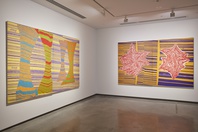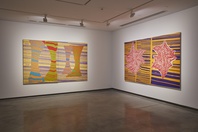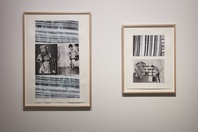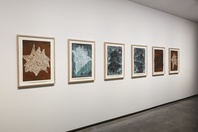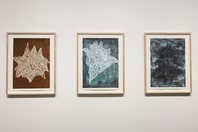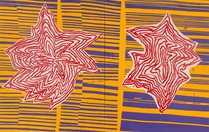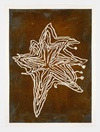Peter Maloney
Canberra
2017
Displayed 2017 at Museum of Contemporary Art Australia
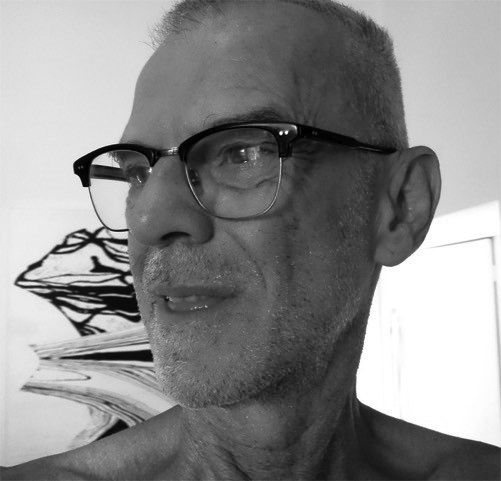
Peter Maloney
Born 1953, Fremantle, Western Australia. Lives and works Canberra
Peter Maloney grew to adolescence in Darwin and attended high school in Canberra, after which he trained in painting at the Victorian College of the Arts in Melbourne. This peripatetic background is reflected in Maloney’s practice, which is eclectic in its expression and visual characteristics. His work retains its conceptual origins in expressionist gesture and has evolved to incorporate absurdist wordplay and gay male iconography. His work is highly process-driven, originating as tiny free-form sketches that are carefully enlarged by a photocopier to become large paper templates from which his paintings develop.
Artist text
by Blair French
Peter Maloney has pursued two key trajectories in his practice for a number of decades. First is his exploration of ‘linear abstraction’ in both works on paper and large-scale paintings. Second is a process of sourcing and reworking in collage form black-and-white photographs of mostly naked men as well as headlines and other text snippets from print media. These are not utterly distinct practices; they run parallel but often cross in Maloney’s work, with text finding its way into paintings and photographs being incorporated into works on paper. The continuity of both strands of activity speaks to their importance as life practices for the artist.
In his early paintings Maloney utilised gestural, expressive lines, drawing in part on cursive handwriting, in a practice he ironically referred to as ‘sissy abstraction’, undercutting the masculine associations of abstract expressionism. His paintings are now more overtly structured. Maloney makes fluid, linear marks on a small scale then enlarges them on a photocopier, in the process building a store of monochromatic paper templates that he then uses to construct his paintings. Apparently spontaneous gestures are amplified, given concrete form and dramatic presence, particularly when further intensified by vivid, even lurid, colour that sharpens linearity, such as in the major 2012–13 work Pagan Spring, which animates a sense of totemic figures and forms in play with each other.
In new works, the large two-panelled painting Blue Danube (2016) and a series of related works on paper in metallic paints (reflecting his interest in industrial music, particularly that of British group Throbbing Gristle), Maloney explores a new interconnected, almost organic cellular structure composed of connecting lines that form rings, symbols of growth or the pulsing of energy. But there is a more noxious association here also. The artist has talked of nightmares of exploding coloured lines, which he associates with nuclear explosions and specifically the 1952 nuclear test carried out on the Montebello Islands off the coast of Western Australia and witnessed by his mother, eight months pregnant with the artist, from the veranda of her home on the mainland. Blue Danube is the name of the nuclear weapon developed from that test – the first British nuclear warhead, subsequently exploded at Maralinga in 1956.
So the personal and societal intertwine throughout Maloney’s work. In recent years he has incorporated found media headlines into paintings, replicating print fonts in painted fragments that run across his intensely coloured abstract compositions, such as in the work The Bottom of My Heart (2014). This results in incisive, even sardonic, observations regarding contemporary life and the art world, which can double as commentaries on how history remains alive in the present.
Maloney has also produced hundreds of works on paper integrating photographs, text and drawings over the years. The sense of commitment to this work is amplified by its personal intensity, how it builds and conveys states of desire and loss and the holding to community. Here, Maloney reappropriates aesthetic codes of representation including those associated with gay male photographic pornography into a tender, intimate idiom. As apparent in the two of these works exhibited in The National 2017: New Australian Art, there is occasionally a sense of the relationship between artist/photographer and models, as well as a frequently expressive, if delicate, grounding and working over of the photographs through painting and drawing.
